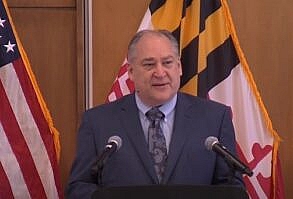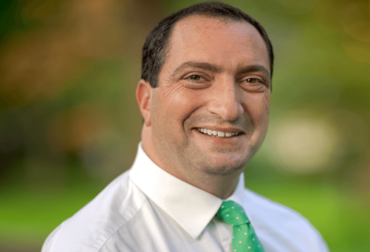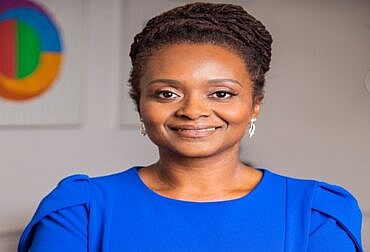Nagender Madavaram discussed with Dr. Raymond Crowel, Director of the Montgomery County Department of Health and Human Services (DHHS) about his leadership during Covid. Dr. Crowel served as the Chief of Behavioral Health and Crisis Services for Montgomery County for ten years prior to becoming the Director, DHHS. He is a Clinical Psychologist with more than 30 years of experience. This is the first of a 2-part transcript of the interview which covered the topics of functioning of DHHS in pandemic, vaccination and racial equity, role of nonprofits, mental health issues and coordination with community organizations.
Functioning of DHHS in Pandemic:
Nagender Madavaram: The County witnessed unprecedented epidemic. DHHS successfully overcome the pandemic and vaccinated more than a million residents. DHHS did many remarkable activities during the pandemic. Can you project highlights of achievements?
Dr. Raymond Crowel: The Department of Health and Human Services is so broad and there are so many achievements. I would start with the obvious one. I think the testing and vaccination of Montgomery County had been the core and most visible work the HHS has done in the last two years. I would say, getting vaccinated almost a million residents and now working on getting boosters out the door and vaccinating our children. I’d say unquestionably, that has been one of the chronic successes of the department in the last two years. Doing all the work to get people tested, getting masks, safety equipment and hand sanitizer out the door to provider community. All of that has been both the labor of love and a nonstop labor for the last two years. My staff have done a phenomenal job of messaging people about how to keep them safe. Particularly, our public health team has been instrumental in getting that work. Doctor Gales and Doctor Bridges, currently Acting County Health Officer have played phenomenal role in making that work happen. So, that would be the probably one of the bigger pieces, the second one is that having to shut things down and close things down meant that people were facing hardships. They lost jobs, they lost money and they needed food. So, we were getting people fed and keeping them fed over the last year in coordination with Food Security Task Force.
You know our senior nutrition program, typically in a month, feeds 38,000 seniors in the county. During the COVID we double that to $74,000 a month. In the last 12 months we served 710,000 meals. That’s not counting the work that we’ve done with consolidated hubs. Getting food through the hubs and other support services that we’ve done. Those are just some of the big-ticket items. I’m really proud of our mental health team. Our health team shifted completely to telework so that folks could continue to get treatment and get served remotely where possible in face to face and where it was necessary. I think the dramatic change is we have completely shifted as a department how we work. We had to help families and households figure out how to access this remotely. So, they did a great job of setting up systems to do that work. Even now, we still have a fair amount of our work that is done remotely which makes it easier for some folks to access services. So, those are just some of the big highlights for me in this last year. It’s a big department, so I could spread out for the next hour. As you pointed out, large mental health teams, navigation teams, minority health initiative programs joined forces with public health to do testing, vaccinations and case management in communities that were hard to reach. I would say, we wrote the racial equity and social justice plans. We wrote a racial equity program and implemented the plan to make sure that vaccines got into communities they were historically bypassed. I actually drafted the plan to address historic disparity, so that Black, Brown, and Asian communities get vaccinated.
Vaccination and Racial Equity:
Nagender Madavaram: When I see the vaccination numbers the County is leading the county.
Dr. Raymond Crowel: We are leading the nation in vaccinations and demonstrating how to do it. Our equity plan has been picked up by the State and other places around the country. The people have found it useful as a way of thinking about and using data to figure out how to get in the hardest hit communities. The Baltimore Sun published a report last week that said that we are absolutely leading the nation amongst the large counties and getting vaccinations done.
Nagender Madavaram: There is another interesting thing that Montgomery County is giving priority to people of color and racial equity. That is exceptional in the nation.
Dr. Raymond Crowel: I think early, when we look at the data it was clear where the COVID was attacking us, in the communities of color. Particularly, our Latino community, our Black community at the forefront, in terms of numbers of those who are being infected and numbers who were dying. So, the plan that we wrote reflected the fact. I gave message to the Council. The teams took the vaccine to the places where COVID was attacking the county. That is what we did, because it was necessary for the welfare of the entire county.
Nagender Madavaram: Community organizations reached their members and got benefits to them. The people who are in the network got testing, vaccines, and food without any problem. There are many people in the County they are not part of any community organization. What is your methodology to reach them?
Dr. Raymond Crowel: One of the things that we’re working on is a situation that developed at the southern border, particularly, regarding immigrants Community. So, one of the programs we designed is the newcomers program. It was initially for unaccompanied minors but it is now the newcomers program that is designed to identify, connect with folks who are new arrivals to the county. Regardless of their immigration status and how they got here, but to connect with them to make sure that they are engaged with food, legal supports, housing supports, and health supports as they need them. So that’s a collaborative effort with partners across the county who have been historically involved with immigrant community. The 311 system gave them window to contact the County Government for benefits without hesitation. Obviously, for some help and assistance they can contact us through email or phone. Our providers, working with members of immigrant communities, can put them in touch with us. If they show up at a food bank for requesting food can also get connected to us. There are plenty of avenues we’re trying to create , so that when they come to the door we can get connected. We’re working with the schools. So, we’re opening as many portals as possible about everything.
Role of Nonprofits:
Nagender Madavaram: Every crisis creates new opportunity. I volunteered to nonprofit organizations to distribute vegetable, food and other supplies. Huge quantity of vegetables does not meet standards of grocery stores but they are eatable. Farmers do not have option but throw them in the field. I observed the amazing thing that nonprofits are bringing agricultural products, which were rejected by grocery stores for not meeting their standards, giving to needy people. How this new framework came into existence.
Dr. Raymond Crowel: I would credit that work to some of our partners in the Community who are deeply connected. There is six degrees of separation between some of our community partners and CEOs of major corporations. They understood what was happening with farmers produce and use of it. I credit the folks at Black Rock in East County for reaching out to farmers and to say, let us have the produce that you’re not meeting the standards because it is still viable and it’s still useful for folks. It is an example from my perspective of how partners that we support stand up and take some initiatives. I’ve been delighted to help and assist them.
Nagender Madavaram: Interestingly, unused vegetables at the hubs are delivered to pig farms and goat farms. A new network is established with vegetable farmers and pig farmers through nonprofits.
Dr. Raymond Crowel: That’s right, I think there is some things that we have learned about efficiency in distribution of food. You know how we might address disparities, and how do we do things like not waste food. We typically waste a lot of food in this country. I think we have done a job. Good job of identifying what’s usable food that isn’t going to go into the grocery stores and figure out how we can get that out to people who really need it. The level of hunger in the county is now much more visible in the same way that the healthcare disparities are visible. Things sometimes takes a longer time because we are government. The pandemic eliminated a lot of red tape and a lot of bureaucracy. We implemented a lot of things very quickly to make sure that we had the resources that we needed, whether it was kind of arrangement with the hub providers to expand the food distribution capacity. We demonstrated to ourselves that we can move faster. I’m hoping that some of those things will survive beyond the pandemic. On telework, we’ve now worked in agreement with the unions. The amount of work that we are now capable of doing on the internet or over the phone that people can access us a lot easier than they could have. There are still some folks who don’t have that technology, and so we’re still doing office space and other resources for them. It’s another whole new way of doing this work that makes us give people better access. That is what we will keep. It will continue on after the pandemic.
Mental Health Issues:
Nagender Madavaram: Pandemic affected children and youth who have been suffering from mental health problems badly. Some families couldn’t afford food for children as businesses shut down and they lost their jobs. Many houses do not have internet connection to access virtual sessions. The County provided groceries and other supplies but this population is directly affected severely. How did you address the problem?
Dr. Raymond Crowel: It has been our biggest and ongoing challenge with school children. They lost a lot of time in terms of their social connections in their engagement. The school systems did absolutely everything that they could try to make virtual learning. People have their opinions about how well they did on that, or how well school systems across the country did. I think the challenge for us was figuring out how do we meet special needs of children. So, we created the telehealth network for the children that were already in the system and already had known mental health issues. The schools provided children with Chromebooks so that they could access virtual classrooms. We piggyback on the Chromebooks to do their clinical work with right therapy with them to make sure we were staying connected to them. We did a fair amount of outreach to parents and the families. It’s official opportunities for parents and families to make sure that they understood the stress that their children were facing. We coordinated with the schools to make sure that they reached out and saw problems emerging in kids. They were able to connect us with those children. So, there’s a lot of work that went on during the pandemic to try to help. Everybody really to deal with this stress and anxiety. The challenge now is that these children come back to school. They have missed in person education and have missed a lot of time with each other. They lost some of abilities like the socialization, their comfort level, their ability to negotiate the problem solving. So, they have to relearn those skills.
We learned that when you’re mad at somebody, you can’t just turn off the computer and step away from them. We have to figure out how to solve the problem in real time. We’re seeing in our work and the schools a lot of mental health challenges. People are stressed and coming back with stress. They’re having trouble with adjusting and adapting being back in classroom settings. We are helping schools to staff up and add social workers, counselors, and social workers in the schools. We’re helping them to figure out what those positions need to do and how those positions need to respond to students. So, we built a collaborative network for kids. Now, this is going to be with us for the next couple of years. It is a kind of trauma, it doesn’t end before the pandemic ends, which will take some time. So, we’re developing and strengthening the system to make sure that we have providers and they have the skills to support children. There’s a reason that people put banks in grocery stores is because that’s where people go. Everybody goes to grocery store at some point, so having a bank there looks like a little easier and more convenient. We’re trying to put more mental health and more support services in the schools in partnership with the MCPS. So, that when children have a challenge, there is someone available to them, that’s our plan as we move forward and out of the pandemic.
Nagender Madavaram: Individuals with mental problems like personal interaction with helpers and fellow individuals. The pandemic changed their communication channel. The individuals are not happy with virtual services and they are restless. Parents are facing serious challenges from restless individuals at home. You are expert in mental health field. What challenges you encountered in this field?
Dr. Raymond Crowel: So, the couple of different things we touched on the mental health. I’m also a psychotherapist and I have a private practice, which is pretty much severely limited because I am busy with Montgomery County. The private practice is the thing that I do because I love to do that work but had to limit the private practice. It’s entirely virtual at this point. This has not been a difficult shift for most of them here though they prefer to be in person. You referenced the developmental disabilities community and persons with autism target. That is a different challenge. In our state system, the developmental disabilities and mental health were split out. I think in an appropriate way and sometimes challenging ways, certainly. The challenge for me is process that individual needs to be in person. We have to be in person and that’s our providers have been more than willing to get back in person to do that work. I think there is a shortage of folks who work for the individuals of mental health and developmental disabilities in the County. The challenge for us has been to support the development disability community. We did work with them around because we knew they needed to be face to face. We did a lot of work with them and give them protective gear, face masks, shields, gloves, sanitizing supplies and guidance about how to interact with folks in this environment. I think we are doing more in-person interaction with the mental health individuals then we are with the development disability community. It is one of the things that got highlighted under the pandemic is that there is a gap in mental health service needs and even our development disability community itself. We have some providers out there to do it who understand the nature of autism and disabilities that are really quite good at balancing them. The challenge is making sure they’re adequately funded and adequately supported to do the job.
Coordination with Community Organizations:
Nagender Madavaram: How well the DHHS coordinated with the Office of Community Partnerships to reach various communities during the pandemic?
Dr. Raymond Crowel: We are our hand in glove right now with Office of Community Partnerships. We’ve been hand in glove for the last few years. A few years ago, they did a great job with getting folks signed up to complete the census. When it came to their neighborhoods, they created a whole community network. So, when it came time to get people tested and vaccinated, we called Office of Community Partnerships and partnered with them to reactivate that network across the county. They recruited folks. We gave them messaging, tools, equipment and guidance to reach communities. The network did knock doors, hang door tags, ask people to get tested, and get vaccinated. So, they have been absolutely an integral part of the process on our newcomers’ piece. They are handling some of the legal issues for us, but they’re also coordinating through their outreach in their community networks. They have been invaluable in helping us to get to where we needed to get to.












1 comments On Nagender’s Interview with Dr. Raymond Crowel Part-I
Well done interview of a very effective leader.